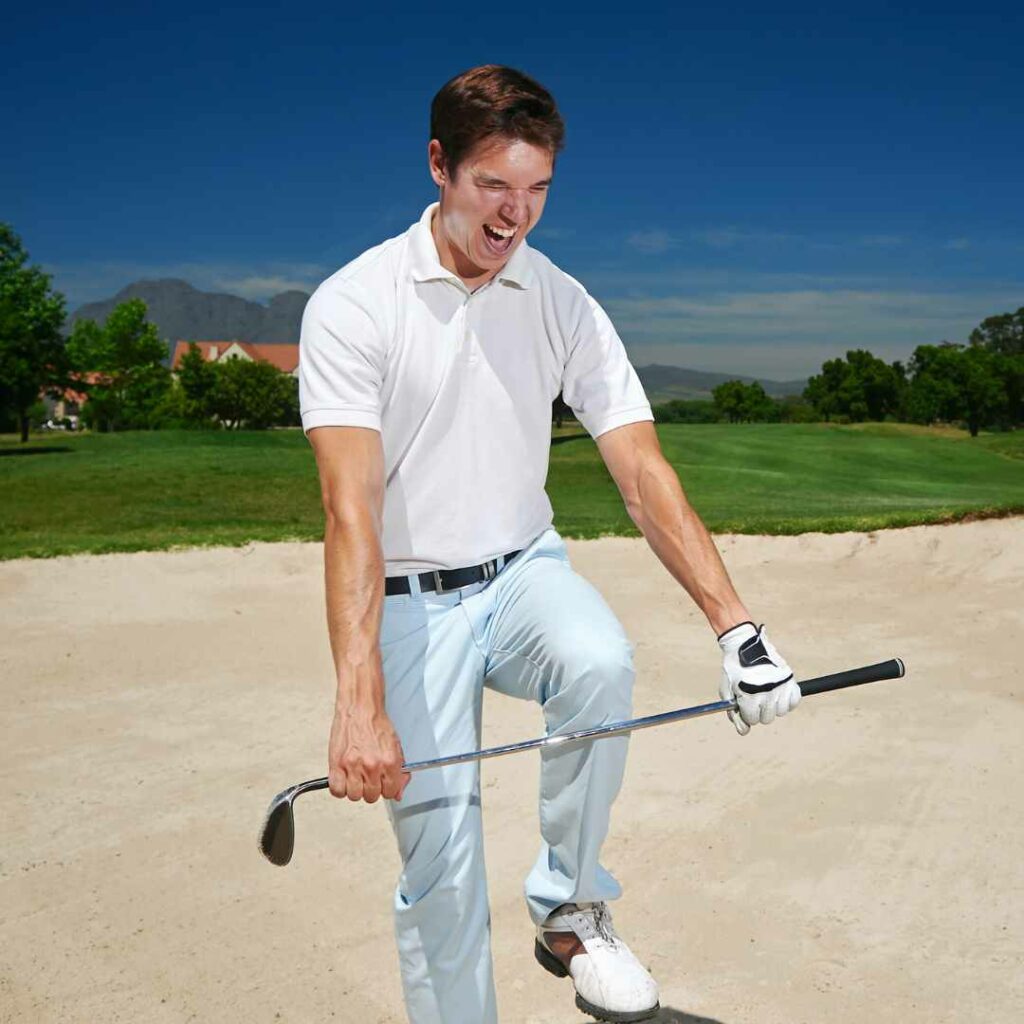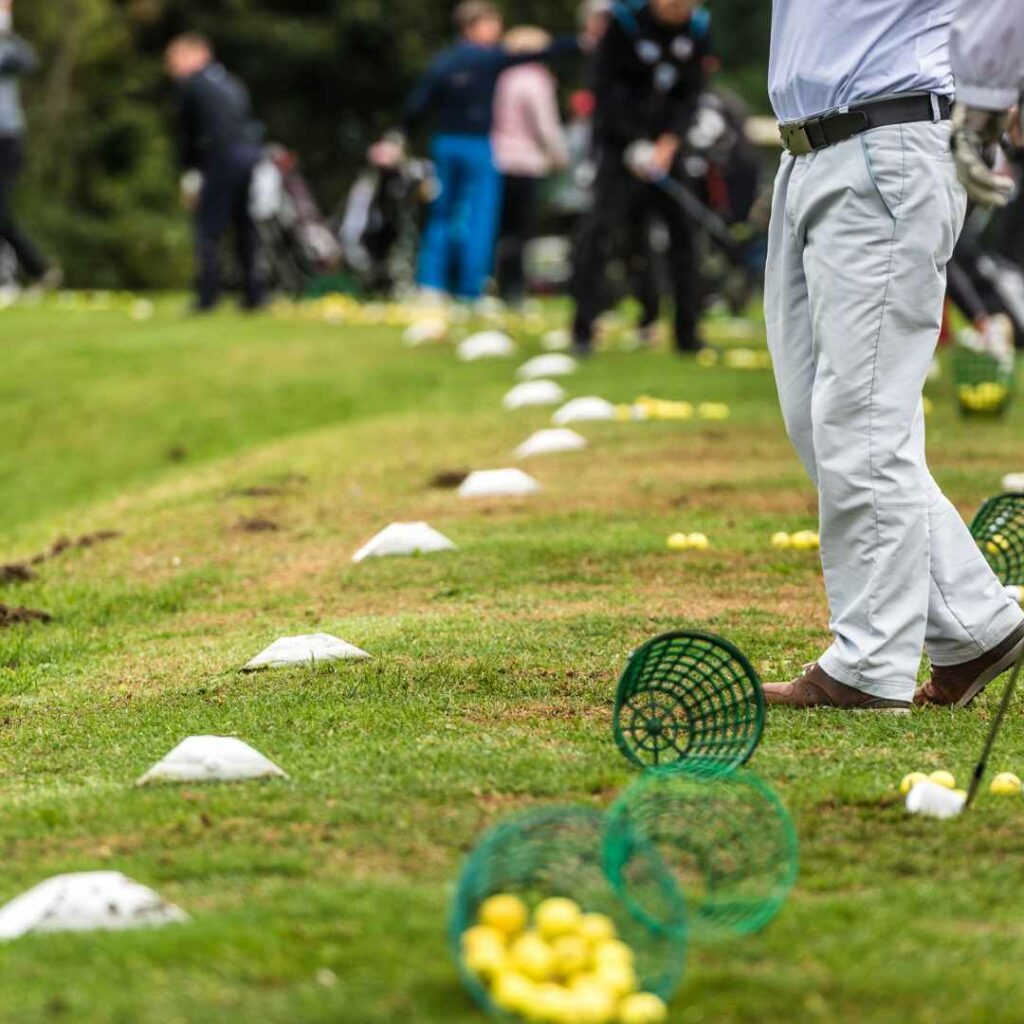
25 Best Golf Tips for Beginners
25 Best Golf Tips for Beginners
Mastering the Greens: In-Depth Best Golf Tips for Beginners
Embarking on your golfing journey? Golf For Beginners Academy has you covered with a detailed guide featuring essential tips tailored for novice players. Let’s dive into each section for a comprehensive understanding of golf tips for beginners.
The Fundamentals of Golf - Section 1
Proper Grip and Stance: Achieve a strong foundation by mastering your grip and stance. A neutral grip and balanced stance provide stability, ensuring a controlled and powerful swing.
Understanding Club Selection: Learn the basics of club selection based on the distance and shot requirements. Familiarize yourself with the different types of clubs and their specific uses.
Swing Basics: Focus on a fluid and balanced swing. Practice your backswing, downswing, and follow-through to create a consistent and efficient motion that improves accuracy.
Ball Positioning: Understand the importance of proper ball positioning for different shots. Master the alignment of the ball in your stance to optimize trajectory and contact.
Developing a Pre-Shot Routine: Establish a pre-shot routine to enhance your focus and consistency. This routine can include visualizing your shot, checking alignment, and taking a few practice swings.

Want to learn more about the swing?
Listen to our podcast!
Mastering the Short Game - Section 2

Putting Precision: Hone your putting skills by focusing on distance control, alignment, and a smooth stroke. The short game is often where strokes can be saved or lost.
Chipping Techniques: Practice various chipping techniques for shots around the green. Learn how to control trajectory and spin to get the ball close to the hole.
Pitching Perfection: Develop your pitching skills for shots that require more loft. Mastering the pitch shot is crucial for navigating obstacles and landing the ball softly on the green.
Bunker Play: Understand the fundamentals of bunker play, including the proper setup, swing, and strategy for getting out of sand traps efficiently.
Reading Greens: Improve your ability to read greens by understanding the slope, grain, and nuances of the putting surface. Accurate green reading is key to successful putting.
Course Management Strategies - Section 3
Playing Within Your Abilities: Recognize your skill level and play within your abilities. Avoid unnecessary risks and focus on making consistent shots to improve overall performance.
Strategic Club Choices: Develop a strategic approach to club selection based on the layout of the course. Choose clubs that allow you to navigate hazards and position yourself for the next shot.
Understanding Par: Familiarize yourself with the concept of par and set realistic expectations. Aim to play within or slightly above par, focusing on steady improvement.
Pace of Play: Respect the pace of play on the course. Be mindful of your group’s speed, maintain a reasonable pace, and be ready for your turn to keep the game enjoyable for everyone.
Course Awareness: Stay aware of the course layout and potential challenges. Knowing where hazards, bunkers, and doglegs are located helps you plan and execute more successful shots.

Mental Game and Focus - Section 4

Maintaining a Positive Mindset: Cultivate a positive attitude on the course. Overcome challenges with resilience, focusing on learning from each shot rather than dwelling on mistakes.
Visualization Techniques: Harness the power of visualization to enhance your performance. Picture successful shots in your mind before executing them to boost confidence.
Breathing and Relaxation: Incorporate deep breathing and relaxation techniques to stay calm under pressure. Managing stress enhances your ability to make clear decisions on the course.
Handling Setbacks: Learn to bounce back from setbacks and mistakes. Resilience is a crucial trait in golf, and the ability to recover from a bad shot is essential for long-term success.
Staying Present on the Course: Practice staying in the moment during your round. Avoid dwelling on past shots or worrying about future ones. Focus on the task at hand to improve overall performance.
Continuous Improvement and Resources - Section 5
Effective Practice Habits: Maximize your practice sessions with focused drills and exercises. Target specific areas of your game that need improvement and track your progress over time.
Golf Lessons and Professional Guidance: Consider taking golf lessons from a certified instructor. Professional guidance helps identify areas for improvement and provides personalized feedback.
Utilizing Technology: Leverage golf technology, such as swing analysis apps and launch monitors, to gain insights into your swing mechanics and track performance metrics.
Joining a Golf Community: Connect with other golf enthusiasts by joining a local golf community or club. Networking with fellow players provides opportunities for friendly competition and shared learning.
Staying Informed: Stay informed about the latest trends, techniques, and equipment in the golfing world. Subscribe to golf publications, follow reputable online resources, and attend golf expos for continuous learning.

Ready to Take the Next Step? ⛳️
If you’re eager to dive deeper into golf’s intriguing world and master the ins and outs of the game, look no further than our “Golf For Beginners – The Ultimate Starter Guide.” Whether you’re a newbie or just brushing up on your skills, this online course has something for everyone.
⛳️ Discover the Ultimate Golf Starter Guide Right Here ⛳️
Conclusion on the 25 Best Golf tips for beginners
Congratulations! You’ve navigated through our comprehensive guide on golf tips for beginners. Remember, mastering golf is a continuous journey of improvement. Apply these tips, stay dedicated to your practice, and enjoy the evolving experience of becoming a skilled and confident golfer. Golf For Beginners Academy is here to support you every step of the way. Happy golfing!
Did You Like The 25 Best Golf Tips For Beginners?
If you want more detailed help with you game of golf, and specifically about the short game of golf, our partner-portal called World Of Short Game deliver great content for all short game related topics. Click here to visit World Of Short Game.
And if you live in Denmark, never hesitated to reach out to Danish Golf Academy for help with any part of your game.

What is a Golf Handicap for a Beginner?
Cracking the Code: What's a Golf Handicap for a Beginner?
A Playful Guide
So, you’ve been bitten by the golf bug and have embarked on a journey that involves more than just mastering your swing – you’ve entered the world of golf handicaps. Before you imagine a golf club with a broken leg, let’s dive into what a golf handicap for a beginner really is. Get ready to decode this puzzle with a touch of humor, a dash of golf magic, and a sprinkle of beginner-friendly guidance.
The Handicap: More Than Just a Lucky Charm
Now, before you start thinking that a golf handicap is some sort of magic wand that turns bogeys into birdies, let’s clear things up. A golf handicap isn’t a mystical spell; it’s a system that levels the playing field. It’s like giving everyone a fair shot at enjoying the game, regardless of their skill level. So, if you’re a beginner, this is your ticket to an awesome golf adventure!
Picture this: you and your friends decide to play a round of golf. Now, let’s say you’re a beginner, while your friend Tim might be channeling his inner Tiger Woods. The handicap system steps in to balance things out. It’s a way of adjusting the score so that everyone has a fair shot at winning, whether you’re a golf pro or just starting out.

The Math: Let's Keep it Easy, Peasy
Now, you might be thinking, “Wait, I’m not a math wizard. How does this all work?” Fear not, because we’re keeping it as breezy as a day on the fairway. Let’s break it down:
Establish Your Handicap Index: This is like your golfing DNA. It’s calculated based on your scores from your previous rounds of golf. As a beginner, this index represents your potential skill level.
Course Rating and Slope Rating: These are like the guides that help you navigate the golf course. They tell you how difficult a course is for a scratch golfer (someone with a handicap index of 0).
Calculating Your Handicap: Here comes the easy part. Multiply your Handicap Index by the Slope Rating and then divide by the average Slope Rating of 113. Don’t worry; there are apps and calculators for this – you’re not doing complex algebra on the fairway!
Golf Handicap for a Beginner: The Sweet Spot for Fair Play
As a beginner, you might be thinking, “Is this really for me?” Absolutely! The handicap system is like a buddy who’s got your back. It means you can play against your more experienced friends without feeling like you’re in a totally different league. It’s your chance to shine on the fairway, show off your progress, and still have a shot at victory.

Embrace the Progress: From Bogey to Birdie and Beyond

Think of your golf handicap like a treasure map. As you improve, your handicap will reflect your progress. Those bogeys might turn into birdies, and your scorecard will be a testament to your dedication. Remember, even the pros started as beginners. So, let the handicap system be your guide as you evolve from a golfing tadpole into a fairway maestro.
Becoming a Handicap Hero: Tips for Beginners
Start Small: As a beginner, focus on understanding the basics of golf and enjoying the game. Your handicap will naturally evolve as you gain experience and confidence.
Consistency Matters: Consistency is key when it comes to establishing your handicap index. Keep track of your scores and rounds – apps and online platforms can make this a breeze.
Practice, Practice, Practice: Improvement is the name of the game. The more you practice, the better your scores will become, and your handicap will reflect that progress.
Conclusion: Handicap Hero in the Making
And there you have it, a playful journey through the world of golf handicaps for beginners. Remember, a golf handicap isn’t just a number; it’s a reflection of your growth, determination, and love for the game. As a beginner, it’s your passport to joining the ranks of golfers who’ve embraced the challenge, enjoyed the camaraderie, and celebrated every swing.
So, as you step onto the fairway, don’t let the term “handicap” intimidate you. Embrace it as your partner on this adventure, your gauge of improvement, and your reminder that every stroke, whether it’s a bogey or a birdie, is a step closer to becoming a true golfing hero. So swing those clubs, cherish those moments, and let your handicap be a badge of honor on your journey to fairway greatness!
Ready to Take the Plunge? ⛳️
If you’re eager to lower your handicap right away, look no further than our “Golf For Beginners – The Ultimate Starter Guide.” Whether you’re a newbie or just brushing up on your skills, this online course has something for everyone.
⛳️ Discover the Ultimate Golf Starter Guide Right Here ⛳️
Did you like "What is a Golf Handicap for a Beginner?"
If you want more detailed help with you game of golf, and specifically about the short game of golf, our partner-portal called World Of Short Game deliver great content for all short game related topics. Click here to visit World Of Short Game.
And if you live in Denmark, never hesitated to reach out to Danish Golf Academy for help with any part of your game.

How to Keep Score in Golf?
How to Keep Score in Golf
Par, Birdies, and Bogeys: How to Keep Score in Golf Like a Pro
Ah, the lush greens, the crisp morning air, and the soft swish of your golf club cutting through the atmosphere – welcome to the wonderful world of golf! But as you navigate the course like an explorer on a treasure hunt, another adventure awaits: keeping score. Fear not, fellow golfer, for we’re here to turn scorekeeping from a mysterious maze into a fairway fiesta. So grab your clubs, your sense of humor, and let’s embark on a scorecard adventure that will make you the master of the numbers game!
The Scorecard: Your Golfing Canvas
Before we dive into the scorekeeping dance, let’s meet your trusty sidekick – the scorecard. Think of it as your canvas, waiting to be adorned with the strokes of your journey. Each hole, each fairway, each putt is a brushstroke, painting a picture of your golfing prowess. So grab that scorecard and let’s add some color!

The Basics: Pars, Birdies, and Eagles, Oh My!
Now, let's unravel the mystery of those numbers and terms that grace the scorecard:
Par: Par is like the benchmark for a hole. It’s the number of strokes that an expert golfer is expected to take to complete the hole. Beat par, and you’re celebrating with a smile; score over par, and it’s time to regroup and conquer next time.
Birdie: Ah, the elusive birdie! It’s when you complete a hole in one stroke less than its par. Imagine sailing through the hole, your ball landing with a graceful touch – that’s a birdie, and you’re soaring!
Eagle: When you manage to conquer a hole in two strokes less than its par, you’ve got yourself an eagle. It’s like a high-five from the golf gods, and you’re on cloud nine!
Tee Time: The Beginning of the Journey
As you step up to the tee, scorecard in hand, remember that keeping score isn't just about numbers – it's about capturing the spirit of the game. Here's a simple breakdown of the process:
Mark the Hole Number: Look at the scorecard. Each hole has a number next to it. Find the number corresponding to the hole you’re about to tackle and mark it down.
Record Strokes: As you take each swing, record the number of strokes it takes you to hit the ball into the hole. If you score par, it’s a zero. If it takes you one stroke over par, mark down 1, and so on.
Tally Up: At the end of each hole, add up your strokes. Remember, it’s not just about the numbers; it’s about the journey, the camaraderie, and the fun you had getting to that final putt.
Pen and Pencil Strategy: A Golfer's Doodle Deligh

Now, let’s talk about the pen and pencil strategy. Some golfers prefer pen, some prefer pencil – it’s like choosing your favorite golf club. If you’re feeling fancy, grab a pen and add a touch of elegance to your scorecard. But if you’re a numbers ninja who likes to keep things flexible, go with a pencil. Regardless of your choice, remember that it’s not about perfection; it’s about capturing your golfing adventure in all its glory.
Etiquette and Fun: The Golden Rules
As you embark on your scorekeeping escapade, remember these golden rules:
Accuracy Matters: Just like a perfectly executed swing, accurate scorekeeping is key. Double-check your strokes to ensure the numbers reflect your adventure on the course.
Celebrate the Effort: Golf is a journey, and each swing is a step. Celebrate the journey, the improvement, and the moments that make you smile. It’s not just about the numbers; it’s about the joy.
Scorekeeping as Bonding: Scorekeeping isn’t just a solo endeavor. It’s a chance to bond with your fellow golfers, compare notes, and share a chuckle over that one putt that had a mind of its own.
Ready to Take the Plunge? ⛳️
You’ve learned about birdies, eagles, bogeys, and how to keep tack of your score – the delightful quirks that make golf the dynamic sport it is. If you’re eager to dive deeper into golf’s intriguing world and master the ins and outs of the game, look no further than our “Golf For Beginners – The Ultimate Starter Guide.” Whether you’re a newbie or just brushing up on your skills, this online course has something for everyone.
⛳️ Discover the Ultimate Golf Starter Guide Right Here ⛳️
Conclusion on: How to Keep Score in Golf?
And there you have it, the playful art of keeping score in golf demystified! As you walk down the fairway, pencil in hand, remember that scorekeeping is a journey. It’s not about the numbers; it’s about the adventure, the friendships, and the memories you create along the way.
So, dear golfer, let your scorecard be your canvas, your strokes be your brushstrokes, and your journey be a fairway fiesta of fun and numbers. As you sink that final putt and tally up the strokes, know that you’ve not just played a game – you’ve embarked on an unforgettable adventure that’s uniquely yours. So swing, smile, and let the scorecard be your memoir of a golfing journey well played!
Did you enjoy "How to Keep Score in Golf"?
If you want more detailed help with you game of golf, and specifically about the short game of golf, our partner-portal called World Of Short Game deliver great content for all short game related topics. Click here to visit World Of Short Game.
And if you live in Denmark, never hesitated to reach out to Danish Golf Academy for help with any part of your game.
Recent Comments
Copyright @ 2024 - Golf For Beginners Academy

